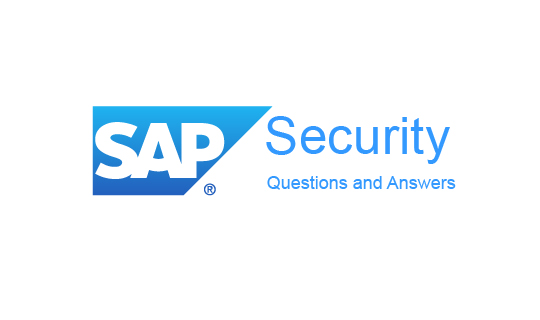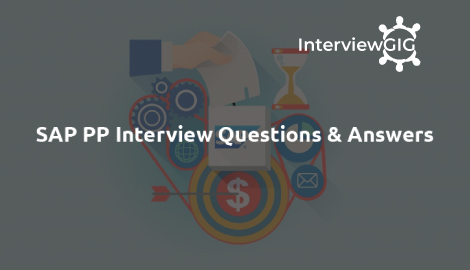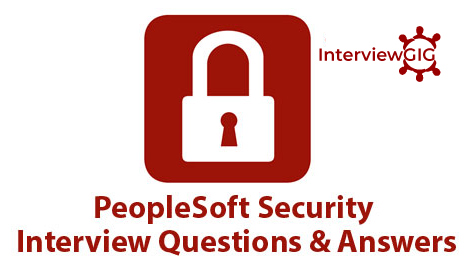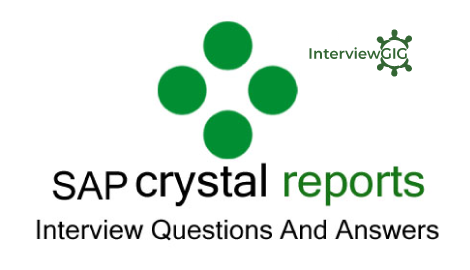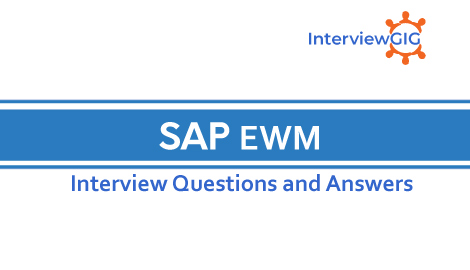SAP S/4HANA is the next-generation business suite designed to Run Simple in a digital economy. Built for the revolutionary SAP S/4 HANA in-memory computing platform, it fundamentally redefines how enterprise software creates value across industries with instant insight. SAP S/4HANA also personalizes the user experience on any device and natively connects to Big Data, the Internet of Things, and business and social networks – all in real time.
What is SAP S/4HANA?
SAP S/4HANA is the next-generation go-to Business Suite tool for SAP (Short form SAP Business suite 4 SAP HANA). It is available on SAP HANA database; SAP It covers the majority of the functionality that was previously available within SAP ECC. The concept behind S/4HANA is to produce a simplified Business Suite that runs on HANA with an SAP Fiori front-end and real-time analytics. The underlying table structure has been re-written to provide a simplified data model to increase performance, simplify reporting and reduce the overall size of the system.
Can you explain inventory management in SAP S/4?
Inventory and warehouse management solutions from SAP enable companies to holistically control goods movements and warehouse operations, from inbound activities to fulfilment, in real time. By integrating real-time data from manufacturing planning, plant maintenance, inventory, and other enterprise resource planning processes, companies can efficiently manage procurement and order processing.
Can you define Lean Manufacturing?
Lean manufacturing includes a set of principles that firms use to achieve improvements in productivity, profitability, quality, and lead-time without sacrificing productivity by eliminating waste through kaizen.
What are the SAP S/4 HANA current versions?
There are two current versions within S/4HANA with a different scope:
SAP S/4HANA Finance: It is based on the core ECC solution. The Finance modules, tables and processes have been simplified whilst the remaining areas have been untouched. Additional new functionality has been released within the Finance space.
SAP S/4HANA Enterprise Management: It has a wider scope, with Materials Management and Operations simplified as well as Finance. A number of new functionalities have been released and many traditional modules have been removed.
Can you define Rebate processing?
Rebate processing is used to process special discounts that are paid retroactively to a customer. These discounts are based on specific terms and conditions that are defined in rebate agreements. The goal of rebates is to build long-term customer relationships
Can you define the master data in SAP?
Data stored is generally categorized as: Master data and Transactional data- Master data is the important data that is used as a base for all transaction in the database. For any kind of activity such as creating, storing, producing, transferring, purchasing, which involves data requires certain master data. Transactional data are based on daily activities performed.
Can you explain PPDS in SAP?
Production Planning and Detailed Scheduling (PPDS) on SAP S/4HANA is the product running on SAP S/4HANA. Production planning and detailed scheduling is a tool in APO (Advanced Planning and Optimization) which takes care of planning and scheduling considering the capacities of various resources. It includes the data like planning procedure, horizon, plan explosion etc.
Why use SAP S/4HANA?
SAP S/4HANA has been created to enable your business to transform. Processes run Quicker, real-time analytics allow for more accurate decision-making, and there is an Improved user experience for your teams.
- Business transformation: SAP S/4HANA is designed to provide business transformation for your organisation.
- Simplified data model
- Improved user experience
- SAP Fiori is available within S/4HANA to improve your users’ experience. Fiori reducesthe volume of key strokes that are required to perform a transaction.
- Real-time analytics: Embedded analytics provides a world of opportunities for organisations.
- SAP HANA
What are the different types of deployment models in SAP HANA?
There are 3 different types of Deployment options
On-premise solution: In this model, the customer purchases software and hardware; the operations are managed by the customer itself.
Cloud solution: In this model, the hardware and software is provided by the cloud solution provider and it is rented to the customer.
Hybrid solutions: In this model, some part of the software is run by the client on-premise server owned by the client, and additional solution is provided by the client provider.
What are compelling SAP HANA use cases?
Real-time analytics as supported by SAP HANA have numerous potential use cases including:
- Profitability reporting and forecasting,
- Retail merchandizing and supply-chain optimization,
- Security and fraud detection,
- Energy use monitoring and optimization, and,
- Telecommunications network monitoring and optimization.
What are the Advantages of SAP S/4 HANA?
Multi tenancy: S/4 HANA takes advantages of HANA’s multi tenancy feature, with this option we can run ECC and CRM or any other satellite system on one box. A typical ECC – CRM data transfer accounts for 60% of overall system load, with this multi tenancy option this data transfer load will go away.
Simplified Data models: SAP removed the redundant tables required for aggregates and indices. This leads us to fewer table to work upon, that means less table locks, less data to manipulate and better performance.
Guided procedures results in faster rollout and reduced learning curve for end users.
Agile implementation: With S/4 HANA SAP gave us the option to easily integrate with cloud applications like Ariba, SuccessFactor, Big Data and even IoT(internet of things). This leads us to faster and simplified integration.
Real time insight: With S/4 HANA we got access to real time data insights which help us in decision making, less efforts in planning, simulation, execution and prediction.
Less time to market: New customers can take advantage of prebuilt functionality and with minimal customization a new product or a business line can be plugged into the system.
Reduced TCO because of smaller IT landscape footprint, Simplified data models, faster rollouts, reduced learning curve and more productivity because of faster systems and guided procedures.
How does SAP S/4hana Relate to S-innovations?
S-innovations were the internal project name for our development program and will not be used anymore.
What happens to existing modifications when a customer moves toSAP S/4 HANA?
In any scenario, the move to SAP S/4HANA is a great opportunity to validate the existing modifications and simplify your solution. It has not been unusual for customers to realize that 50% of the modifications that hamper fast release cycles and require long test cycles were no longer necessary to run the business, but were leftovers from older projects while the remaining modifications could have been built in a less intrusive manner. When moving to SAP S/4HANA, public cloud edition, customers will move their modifications to SAP HANA Cloud Platform as an extension.
Also, customers that make the choice of the SAP S/4HANA, managed cloud edition, the recommended approach is to use SAP HANA Cloud Platform extensions to provision enhancements. In fact, standard field extensions can directly be done within the SAP Fiori UX while SAP HANA Cloud Platform can be leveraged for more significant developments. SAP S/4HANA, on-premise edition, provides maximum customization opportunities: on premise as traditionally done in the past or through SAP HANA Cloud Platform. SAP has several references of SAP Business Suite customers using SAP HANA Cloud Platform extensions for on-premise systems.
In general, the SAP HANA extension framework of SAP HANA Cloud Platform uses SAP HANA as the common platform for SAP S/4HANA and offers additional choices such as the integration of open source solutions. The extension framework has the advantage to isolate modifications from the core and drive agility for the on-premise deployment and safeguard agility for cloud deployments. This means that rather than modifying the core code, enhancements are put in a “safe” environment so that innovation packages can be easily applied. The core SAP S/4HANA system remains “clean” and can be quickly and easily updated when new innovations are added – in just the same way that consumer mobile apps are updated on a regular basis.
Can you explain SAP S/4 HANA Logistics?
SAP S/4HANA is next-generation business suite built on the most advanced in-memory platform. Logistics is used to handle Material Requirement Planning, Inventory Management, Material Valuation, and Capacity Planning, Stock keeping, Reordering, Order Management and Billing, Procurement to help businesses.
What is the benefit to the data model for using an in-memory platform?
SAP S/4HANA delivers high-volume transaction processing (OLTP) and high volume real-time analytical processes (OLAP) based on a unified data model without the redundant data layers typically required by traditional RDBMS based systems. This reduces TCO while providing new opportunities to increase business value from existing investments.
Examples for redundant data layers are custom-built layers based on database tuning efforts such as secondary indexes, or application built-in performance accelerators such as aggregate tables or multiple general ledger versions for different managerial reporting needs. The massive simplifications of the data model and the data processing layers enable business and technological innovations on a broad scale across all lines-of-business and industry solutions. The new application architecture simplifies system landscape architectures and accelerates cloud deployments on an economical scale.
How does SAP S/4 HANA relate to sap’s existing portfolio of cloud solutions?
SAP S/4HANA shall also be made available with public cloud and managed cloud editions. However, SAP S/4HANA will not replace our existing portfolio of line-of-business cloud solutions; it will integrate with and expand it. Our comprehensive offering is planned to allow SAP S/4HANA customers to build hybrid scenarios between SAP S/4HANA and cloud solutions from SAP, including those from SuccessFactors and Ariba as well as integration with SAP hybris Marketing.
This way customers can leverage the cloud at their own pace, based on their needs, while keeping all the integration and business benefits of their existing SAP solutions. In addition, SAP S/4HANA is designed to easily connect with global business networks such as,for example, the Ariba Network and Concur.
What are SAP HANA’s limitations?
SAP HANA is not a platform for loading, processing, and analyzing huge volumes – petabytes or more – of unstructured data, commonly referred to as big data. Therefore, HANA is not suited for social networking and social media data analytics. For such uses cases, enterprises are better off looking to open-source big-data approaches such as Apache Hadoop or LexisNexis HPCC Systems, or even MPP-based next generation data warehousing appliances like EMC Greenplum Datanbase or Teradata AsterData.
While SAP has promised a slew of new HANA-optimized applications, currently only a handful are on the market. It is incumbent upon SAP to follow through on its commitment with practical applications that address real-world business problems. Also, SAP HANA is not pre-optimized to support non-SAP applications, which requires significant application re-engineering on the part of enterprise IT groups.
Can you explain SAP HANA cloud platform relate SAP S/4HANA?
In the context of SAP S/4HANA, SAP HANA Cloud Platform serves as an extension platform and agility layer. It is possible to build specific capabilities extending the scope of SAP S/4HANA by either integrating non-SAP functions or building your own capabilities. The cloud platform not only serves as the development platform but also as the runtime foundation for the developed solutions. The extensions built on the cloud platform can run against both cloud and on-premise deployments of SAP S/4HANA.
What is the fundamental difference between the old SAP business suite code line and the new sap s/4HANA product code line?
The development approach of SAP S/4HANA is to eliminate all artefacts that have been introduced as performance workarounds for classical row-based RDBMS. These are aggregates and programmed indexes that contained no semantic value and only provided fast access to sums and data. On the downside, these created interconnections in the application and complexity in how to lock the system to avoid conflicting updates in aggregates.
Moreover, significant code had to be developed for lengthy ETL (extract-transformload) scenarios incurring data preparation and exception management routines caused by latency. This portion of the code did not carry business semantic in itself, but served as “performance proliferation” in business processes. With SAP S/4 HANA, these different types of workaround on restrictions based on technical limitations are no longer necessary, as the latest information and the time travel from the columnar store can be accessed instantaneously across all inserts and updates and therefore eliminates the need for any overhead of the index and aggregates.
Advanced SAP S/4 HANA Interview Questions and Answers
Question: What are the key architectural changes introduced in SAP S/4HANA compared to previous SAP ERP systems?
Answer:
Key Architectural Changes in SAP S/4HANA:
- Shift to In-Memory Computing: Abandoning the traditional disk-based approach, S/4HANA utilizes the in-memory capabilities of the SAP HANA database for faster data access and processing.
- Simplified Data Model: Eliminates redundant data and simplifies data structures, leading to a smaller footprint and improved performance.
- Focus on Business Processes: Streamlines core business processes by eliminating unnecessary functionalities, making them more user-friendly and efficient.
- Modern User Interface: Introduces SAP Fiori, a role-based user interface designed for ease of use and a mobile-first experience.
- Universal Journal: Integrates operational and transactional data into a single source of truth, providing real-time insights and improved decision-making.
Question: How does SAP S/4HANA leverage in-memory computing technology, and what benefits does it offer?
Answer: S/4HANA utilizes the SAP HANA database, an in-memory platform that stores frequently accessed data in RAM for significantly faster processing compared to traditional disk-based systems. This results in numerous benefits:
Real-time analytics: Enables immediate insights from data, facilitating faster decision-making and improved responsiveness.
Enhanced performance: Reduces processing times for transactions and queries, leading to increased efficiency and user productivity.
Simplified development: Eliminates the need for complex data staging and manipulation, streamlining development processes.
Question: Can you explain the significance of the Universal Journal in SAP S/4HANA and how it differs from the traditional ERP approach?
Answer:
Significance of the Universal Journal:
The Universal Journal is a fundamental change in S/4HANA. It combines previously separate transactional and analytical data into a single, integrated source. This eliminates data inconsistencies and provides a holistic view of business activities:
Improved data consistency: Ensures all data reflects the same state, avoiding discrepancies and improving data reliability.
Real-time reporting: Enables real-time access to all relevant data, eliminating the need for separate analytical systems and reporting cycles.
Simplified data management: Reduces data silos and simplifies management by having a single source of truth.
Question: Can you explain the role and capabilities of SAP Fiori in the context of SAP S/4HANA.
Answer: SAP Fiori is a role-based user interface designed specifically for S/4HANA. It offers several advantages:
Simplified user experience: Provides a modern, intuitive interface that is easy to learn and use, boosting user adoption and efficiency.
Mobile-first design: Enables access to business applications from any device, facilitating remote work and improved accessibility.
Role-based applications: Presents users with only the information and functionalities relevant to their specific roles, streamlining workflows and enhancing user productivity.
Question: How does SAP S/4HANA support embedded analytics, and what are the advantages of this approach?
Answer: S/4HANA integrates analytics directly into the core business application. This means:
Real-time insights: Users can access and analyze data directly within the context of their tasks, without needing to switch to separate reporting tools.
Data-driven decision-making: Enables informed decision-making based on readily available data, leading to improved business performance and agility.
Simplified reporting: Eliminates the need for complex report development and data consolidation, leading to faster and more efficient reporting processes.
Question: Can you explain the concept of Simplification Lists in SAP S/4HANA and their importance during system migration or conversion.
Answer: Simplification Lists are guides provided by SAP that detail functionalities no longer supported or recommended in S/4HANA. During migration or conversion, they help companies:
Identify functionalities to be replaced or retired: Facilitates the process of adjusting business processes to align with the simplified S/4HANA approach.
Reduce system complexity: Streamlines the system and eliminates unnecessary functionalities, leading to a more efficient and manageable environment.
Focus on strategic initiatives: By removing redundant functionalities, companies can dedicate resources towards more strategic business initiatives.
Question: What is the significance of the SAP HANA database in the context of SAP S/4HANA, and how does it contribute to improved performance?
Answer: The SAP HANA database is at the core of S/4HANA, providing in-memory processing and advanced analytical capabilities.
It improves performance by reducing data latency, enabling faster query responses, and supporting complex calculations.
Question: What is the impact of SAP S/4HANA on traditional batch processing and real-time data processing.
Answer:
Batch processing: While still available, S/4HANA encourages real-time data processing due to its speed and efficiency. Businesses can benefit from immediate insights and faster reactions to changing circumstances.
Real-time data processing: Becomes the preferred approach due to the in-memory capabilities of SAP HANA. This enables continuous monitoring, immediate reaction to events, and proactive decision-making.
Question: How does SAP S/4HANA enable businesses to adopt digital transformation strategies and innovate their processes?
Answer:
S/4HANA empowers businesses by:
Simplifying IT infrastructure: Reduces system complexity and data silos, facilitating easier data access and analysis.
Enhancing user experience: Provides a modern and user-friendly interface, fostering user adoption and improved productivity.
Question: Can you explain the differences between SAP S/4HANA Cloud, SAP S/4HANA On-Premise, and SAP S/4HANA Hybrid deployments, including their respective advantages and considerations?
Answer:
SAP S/4HANA Cloud
- Analogy: Software-as-a-Service (SaaS). SAP provides infrastructure, maintenance, and regular updates.
- Advantages: Rapid deployment, lower upfront costs, predictable subscription fees, benefits from continuous innovation provided by SAP.
- Considerations: Less customization flexibility, reliance on SAP for maintenance and updates.
SAP S/4HANA On-Premise
- Analogy: Owning and managing your own data center and software installation.
- Advantages: High degree of customization, complete control over the IT environment, ability to tailor the solution to specific business processes.
- Considerations: Higher upfront investment in hardware and infrastructure, ongoing maintenance costs, responsibility for managing updates and upgrades.
SAP S/4HANA Hybrid
- Analogy: A mix of owned and rented resources, combining on-premise control with the flexibility of cloud-based extensions.
- Advantages: Balance between customization and flexibility, selective use of cloud innovations, potential for a gradual transition to the cloud.
- Considerations: Increased complexity of managing a hybrid environment, potential synchronization issues between on-premise and cloud components.
Choosing the Right Deployment Model:
- Cloud: Ideal for organizations seeking fast implementation, standardized processes, and minimizing IT infrastructure overhead.
- On-Premise: Suited for organizations with highly customized requirements, strict data governance policies, and existing investments in IT infrastructure.
- Hybrid: A good fit for organizations looking for a phased approach to cloud adoption or those wanting to leverage cloud-based innovations while maintaining control over core systems.
